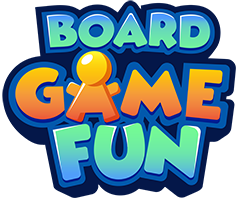How to Play Texas Hold’em
Poker nights are a fantastic way to unwind, connect with friends, and enjoy a thrilling game of strategy. Of all the poker variants, Texas Hold’em stands out for its mix of simplicity and depth. If you’re an adult with a busy schedule, don’t worry—mastering the basics can be straightforward. This guide walks you through the essentials so you can confidently host or join a game, without feeling overwhelmed.
Brief Game Overview
- Objective: Build the best five-card hand using a mix of your two personal (“hole”) cards and five shared (“community”) cards.
- Player Count: Typically 2-10 players, but 4-8 is often ideal for a more dynamic experience.
- Why It’s Popular: Texas Hold’em is easy to learn but tough to master, offering endless possibilities for strategy, bluffing, and psychological play.
Getting Started – What You’ll Need
Essential Materials
- A standard 52-card deck
- Poker chips (or substitutes like coins, candies, or even digital apps)
- A flat playing surface (kitchen table, coffee table, or an actual poker table)
- 2+ players (with 4-8 being perfect for a lively game)
Budget Considerations
- Don’t stress about fancy sets: use inexpensive or homemade chips (like cereal pieces!)
- If you’re new, try free poker apps for practice.
- A basic deck and a clean table are enough to start learning.
Step-by-Step Instructions on How to Play the Game
Setup
-
- Appoint a Dealer: This role rotates clockwise after each hand.
- Shuffle and Deal: The dealer gives each player two cards face down (hole cards).
- Blinds: The two players to the left of the dealer post the “small blind” and “big blind,” respectively. These forced bets create an initial pot for players to compete over.
Here’s a quick breakdown of the betting rounds and community cards:
-
Pre-Flop
- After viewing hole cards, each player can call (match the big blind), raise (increase the bet), or fold (give up the hand).
-
The Flop
- The dealer places three community cards face-up in the middle.
- Another round of betting begins, with players basing decisions on how these community cards interact with their hole cards.
-
The Turn
- A fourth community card is dealt face-up.
- Players bet again, often adjusting strategies as the odds become clearer.
-
The River
- The fifth and final community card is revealed.
- One last betting round occurs before the showdown.
Scoring & Winning
-
- At the showdown, players reveal their hole cards.
- Combine your hole cards with the five community cards to form the best five-card hand.
- Use official poker hand rankings (e.g., Royal Flush, Straight Flush, Four of a Kind, etc.) to determine the winner.
- If there’s a tie, the pot splits evenly among those with the best identical hands.
Secrets to Win Texas Hold 'Em
- Hand Selection: Know which hands are strong before the flop. Starting with high-value cards (like A-K or Q-Q) can improve your odds.
- Position Matters: Being last to act can be a big advantage—observe your opponents’ bets before deciding.
- Bankroll Awareness: Set your limits or use lower-stakes chips if you’re new or just playing casually.
- Bluff Wisely: Bluffing is part of the fun, but do so sparingly until you’re comfortable reading opponents.
Troubleshooting Common Issues
- Hand Ranking Confusion: Keep a printed or digital chart nearby for quick reference.
- Slow Play: Set a timer for each betting round if the pace is dragging.
- Over-Betting: Manage your stack wisely so you don’t go “all in” every other hand.
Frequently Asked Questions
Q: Can beginners join a game with experienced players?
A: Absolutely! Most veteran players are happy to guide newcomers, as long as everyone plays fairly and respects the game.
Q: How many chips should each player start with?
A: A typical range is 50-100 chips each, but any even distribution works so everyone has a fair shot.
Q: What happens in a tie?
A: If two or more players have the same best five-card hand, they split the pot equally.
Q: Can I play without betting real money?
A: Yes—feel free to substitute chips with candies, tokens, or just play for bragging rights!
The Final Shuffle
Texas Hold’em offers endless fun for players of all skill levels. By learning the basics—from betting structure to hand rankings—you’re well on your way to hosting an unforgettable poker night or joining the action at your next gathering. Remember, practice is the best way to improve. Each game you play helps you refine your strategies, read opponents better, and gain confidence.
Looking for more gaming guides? Subscribe to our newsletter for tips, strategies, and resources to level up your game nights.
Ready to shuffle up and deal? Let us know in the comments about your own house rules, fun variations, or questions—we’d love to hear from you!



